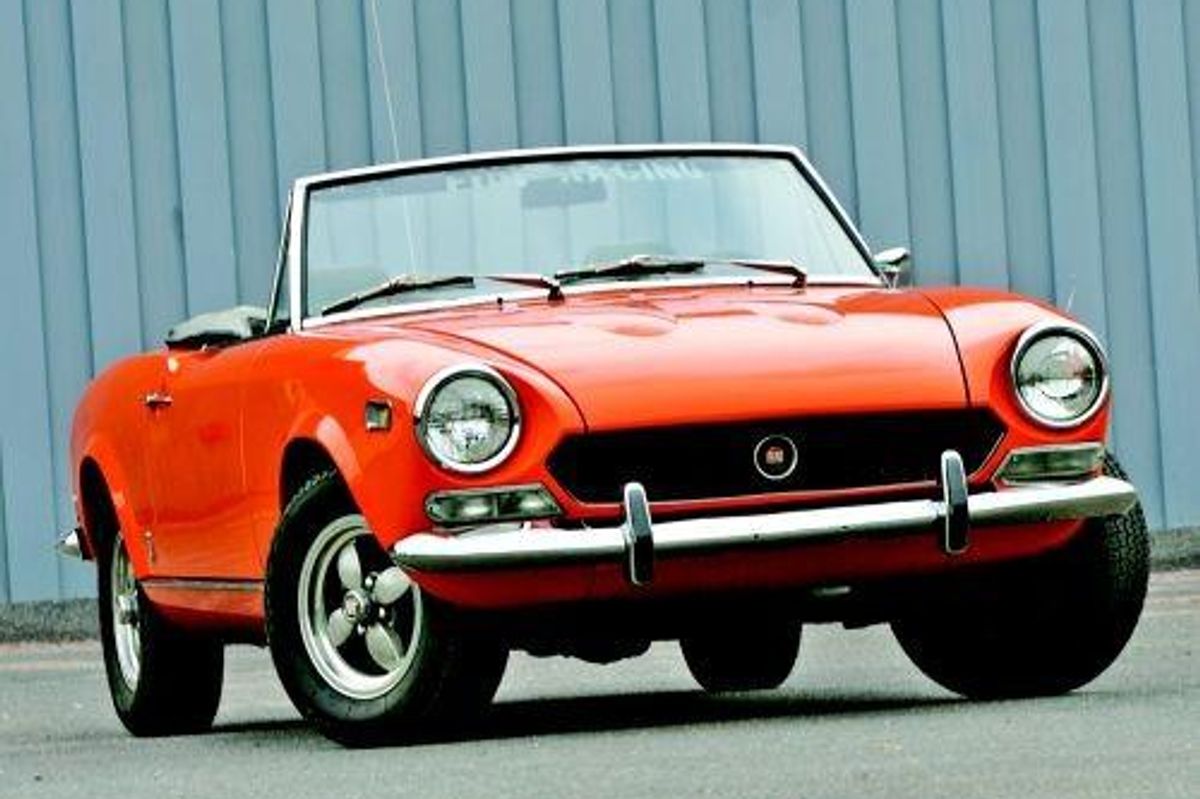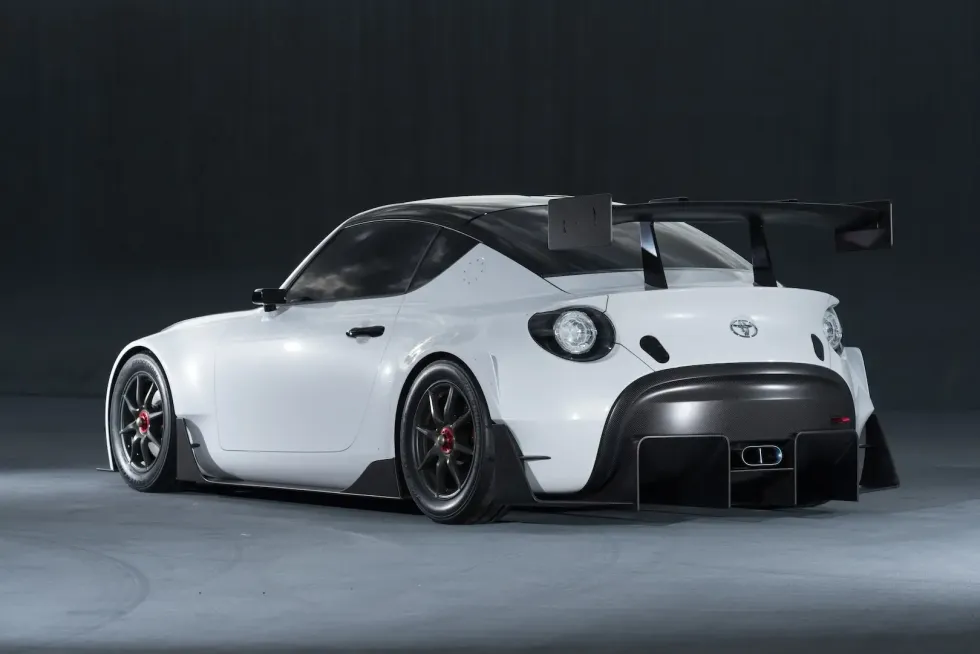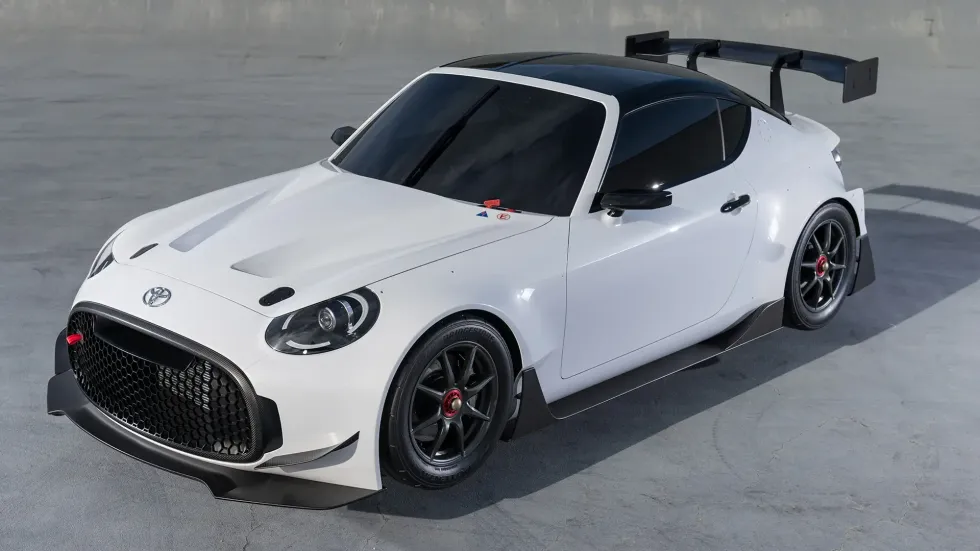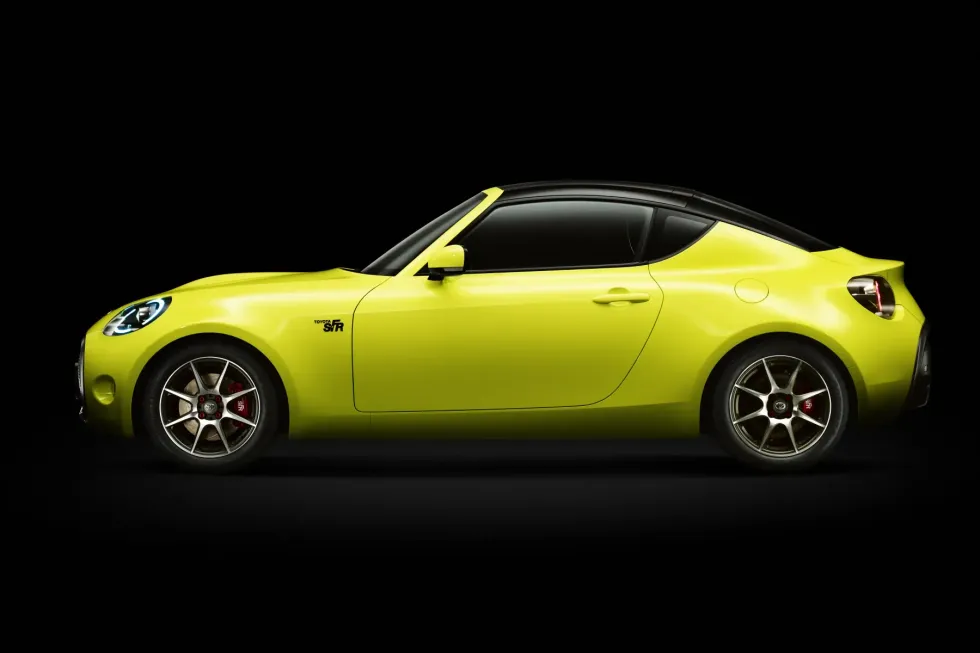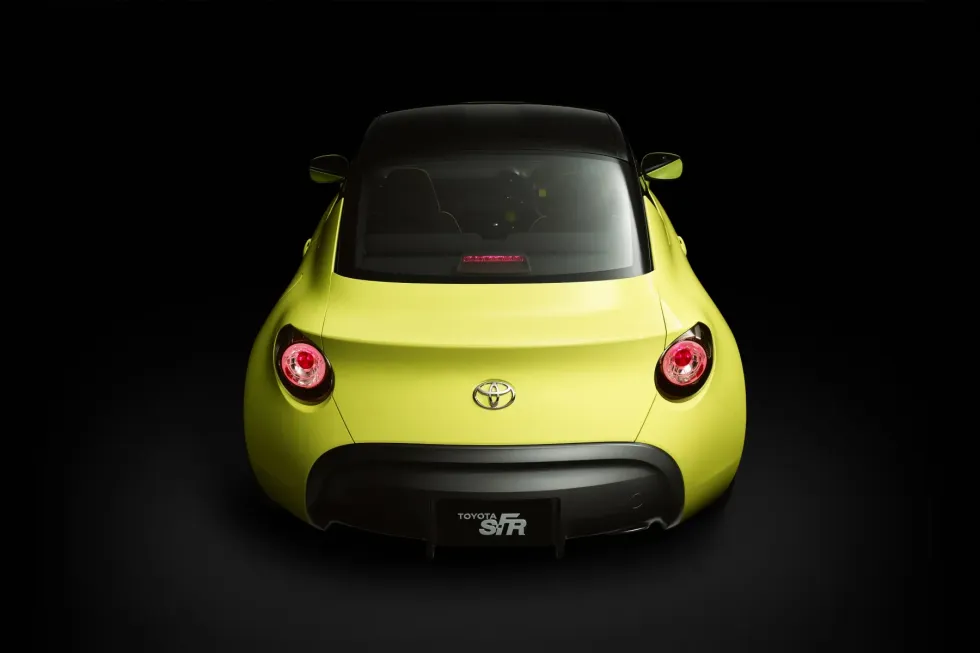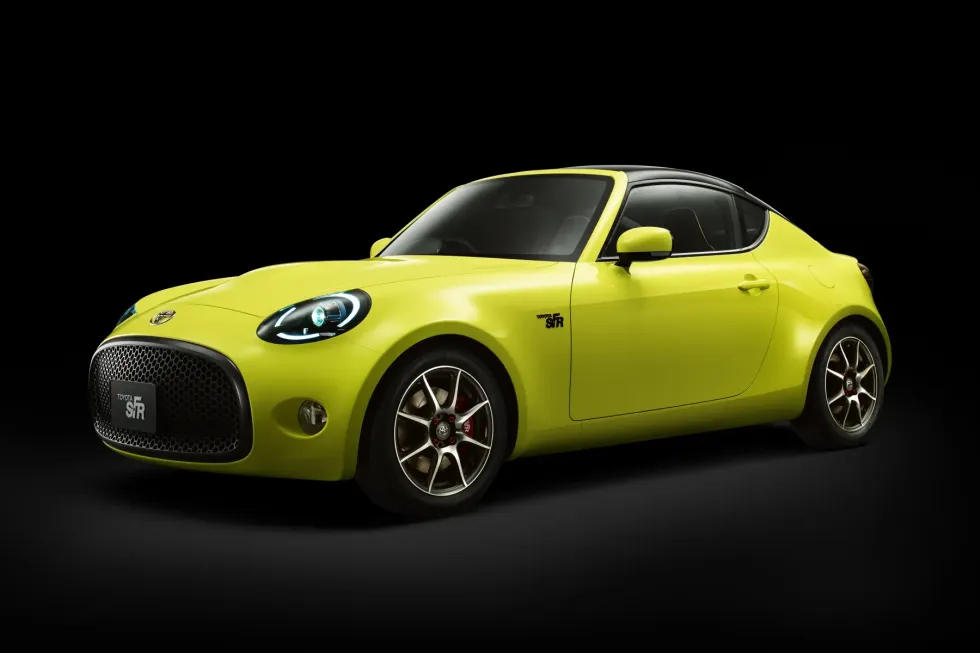Buy
Resources
Entertainment
Magazine
Community
In This Article
Category:
Buyer's Guides
Over 18 years, Fiat--and then, later Pininfarina--sold somewhere around 120,000 124 Spiders in the United States, the lion's share of cars the manufacturer ever built. It's a testament to the Pininfarina-designed car that it still looks as fresh and sporty today as it did when it was introduced in 1966.
But for one reason or another, whenever Americans ready themselves to purchase a sports roadster, the Fiat 124 Spider falls to the bottom of the list. Some claim it's due to the bad reputation Fiat had in the 1970s for turning out pretty cars that ran every third Tuesday. Others blame demon rust, which seems to have a particularly ravenous appetite for Italian machines. Or maybe it's the fact that there were so darned many of them that they've fallen off the radar of many sports car fans here.
Whatever the reason, it's time to rethink our attitude toward the 124 Spider. These cars have been on the road long enough to dispel any urban myths about their longevity and original build quality, and there are plenty of parts suppliers, experts and club advisors around to sort through any common problems these cars have had over the years. According to Dwight Varnes, a past vice-president and co-founder of Fiat-Lancia Unlimited (FLU), and the co-founder of that group's Fiat Freak Out annual meet (July 14-16, 2006), the biggest problem with a Fiat 124 Spider was often not the manufacturer, but the dealer. "An awful lot of dealers took on the Fiat franchises as a second or third line," he says. "Lots of the dealers specialized in American cars, and they took on Fiat as a cheap import. The service departments just didn't want to understand them."

With the exception of the Triumph Spitfire and the MG Midget, Fiat 124 Spiders represent the cheapest point of entry of any sporting roadster on the market, are available in almost every local want ad, and even offer a vestige of a back seat for the family oriented, provided your kids have stumpy little legs. And if spirited driving is your interest, you'd be hard-pressed to find a car with as nimble handling at this price point.
It's easy to miss one of the Spider's most appealing attributes: its size. It offers interior accommodations significantly larger than most competitive roadsters from its day. Sit with a passenger in an MGB and, unless you're a person of small stature, you'll be touching shoulders most of the time. Do the same in a Fiat 124 Spider, and you'll be surprised to note that there are several inches between you, and that you haven't extended the seats all the way to the limit of the tracks.
The 124 was born from Fiat's most versatile platform. From its roots came a coupe, a convertible, a sedan; it even lived on in perpetuity as the Russian Lada. The Spider and the coupe were both derived from the sedan, which was introduced in 1963. The 124 Spider was first introduced at the Turin Auto Show in 1966, after which it went on sale as a 1967 model.
For the purposes of identification, most Fiat fans have broken the 124 Spider into four distinct groups:
The 124AS began in 1966 and ended in 1969, and featured a 1,438cc four-cylinder. 1967 "AS" Spiders are very rare and feature unique equipment not commonly found on Spiders sold in the United States. Most notably, the heater controls were mounted on the dash and used horizontal slide controls. When the car reached U.S. shores in 1968, heater controls moved to the console, where they would stay for the life of the car. Early AS cars were equipped with a driveshaft mounted inside a "torque tube," but the design was dropped in 1968 in favor of the more common rear axle with trailing arms, apparently because the torque tube rear-axle housings were developing cracks. According to Dwight Varnes, a long-time Fiat 124 Spider owner, "The AS cars had innumerable unique pieces compared to those that followed (smaller taillamps, for example), and this makes restoring the AS much more difficult."
BS Spiders--sold between 1970 and 1973--still used the 1,438cc engine, but were revised to include the design cues of the later 1,608cc cars, such as the taillamps, the black gauge bezels and the mesh grille. Look for two-piece lenses on the side marker lamps to identify 1970 models. All others had a one-piece lens. BS Spiders gained a second carburetor for 1970; 1,608cc engines began filtering into production in 1971. These engines were from the same family as the 1,438cc engine used in all 124s. For the most part, external changes were limited to a "1600" badge on the rear valance. In 1973, the last of the BS cars, the 124 Spider, got yet another engine, from a completely new family. The 1,538cc engine was derived from the 132 sedan, which was never sold in the U.S.
From 1974 to 1978, Fiat produced the 124CS1 with the numerically optimistic "1800" 1,756cc four. To compete with tighter emission-control regulations, the 1,756cc four had an air pump driven off of the exhaust cam. 1974 CS1s are the end of what 124 fans describe as "small bumper cars." Most U.S. versions of the car had thin chrome and rubber bumper overriders, which weren't as offensive as the ones on many cars of the era. Cars destined for both California and Maryland had much larger rubber blocks in place of the overriders on all other U.S. cars.
1975 CS1s are immediately recognizable by the much larger--and much maligned--"twin tube" bumpers that were designed to comply with 5-mph bumper regulations. License plate lights on these cars moved to the rear valance panel from the rear bumper, and the grille emblem moved up to the hood. Like other years when a significant change was impending, some 1978 Spiders were fitted with parts destined for the later CS2 Spider which started in 1979. Don't be surprised to find a 1978 124 Spider with 1979 door handles or even a rear differential. These are commonly referred to as "1978.5" models. If a CS1 hood was damaged and needed to be replaced at some point after manufacture, it may have been replaced with a later CS2 hood, because that's all that was available from the factory.
The "124" designation was dropped in favor of the "Spider 2000" name in 1979. The biggest change was the 1,995cc engine from which the car got its name, but myriad other changes were taking place. Outside, the hood features larger twin-cam bulges, taillamps and door handles, while inside, new seat materials were offered (including leather). Alloy wheels, which had not been an option since 1974, were made optional once again. The smog pump finally disappeared in favor of a catalytic converter. In 1980, Spiders were fitted with Bosch L-Jetronic fuel injection, which was a vast improvement from the early CS2's poor carburetor and intake manifold design.
In 1982, Pininfarina took over where Fiat left off, marketing a Spider Azzura under its own name. The 1985.5 model was the last hurrah for the 124 Spider model with the addition of larger front brakes, and rack and pinion steering. Pininfarina discontinued producing the Spider in late 1985 to retool the factory to produce the new Pininfarina-designed Cadillac Allante.
What's the best year to look for? A tricky question, because it's mostly based on preference and budget. According to Dwight Varnes, one of the most appealing offerings is the 1981 to 1982 fuel-injected 2000 Spider. "They were as close as the Fiat 124 ever came to a 'secretary's car,' but they offered a lot of nice equipment and much better performance," he says. For those looking for a more vintage car with less obtrusive bumpers, the 1971 to 1972 cars have the looks, plus the best performance of any of the carbureted cars.
Unfortunately for the budget-minded, the 1979 to mid-1980 cars are the least expensive, but also the most clogged with emissions plumbing, which strangled performance. Jon Logan of Midwest 124 notes that the 1979 49-state version has a more desirable 4-2-1 exhaust manifold versus the 1979 California version and all the 1980 carbureted models. "The carbed 2.0-liter cars are the worst performers in stock form but are very easy to modify by using the 1975 to 1978 models' intake and carburetor," he says. But, as 1979 was the largest production-run year, they also tend to be more commonly available.
Engine
From 1974 to '76, the 1,756cc engine had a smog pump driven off the exhaust cam. The pumps were prone to seizure, which would cause the timing belt to jump. Later models were driven by a v-belt off the crank pulley, specifically because of the seizure issues.
The 1979 California model and the 1980 carbureted models came with a horribly restrictive "4-into-2" cast-iron manifold. The 1979 49-state version has a much less restrictive "4-2-1" design, but was designed to fit a three-bolt catalytic converter. "To install a later fuel-injected 4-2-1 manifold and downpipe," says Jon Logan, "you will also need to install the fuel-injected system's four-bolt catalytic converter and front exhaust muffler/resonator."
For more info on performance mods than we could ever print here, read Brad Artigue's outstanding performance manual at: www.mirafiori.com/faq/fiatcarb_july2004.pdf
Drivetrain
Fiat drivelines are relatively durable and inexpensive to replace if something does go wrong. Used transmissions are available, but Dwight Varnes recommends rebuilding your existing transmission. "It's usually best to have the existing box rebuilt, which usually only needs synchros, shift forks and bearings," he says.
Chris Obert, proprietor of C. Obert & Co., recommends changing rear differential fluid every 25,000 miles or two years. A leaking pinion seal--something that can seem simple enough to fix--can turn into a real problem if you're not careful. Obert recommends, "While home repair in a well-equipped garage armed with a shop manual is possible, it's a lot more complicated than most Fiat owners realize."
Electrical
Dwight Varnes provides "Dwight's Rule": It's a bad ground. "90 percent of a Fiat's electrical problems can be directly traced to a dirty or corroded ground. Component failure is actually pretty rare," says Varnes. The challenge, of course, is tracking down those bad grounds to alleviate the problem. Start with anything that's been added to the stock electrical system over the years: Radios, foglamps, driving lamps, relays, etc., especially those connected with unsoldered crimp-style connectors, can cause electrical nightmares. Once you've eliminated any potential problems here, begin with a wiring diagram and trace every single ground to find out if it's dirty or corroded. Chances are almost guaranteed that you'll find your problem here.
Body
Popular opinion has blamed high oxide content for Fiat rust. But even more importantly, anything the customer didn't see was never protected by paint. Rust in the floors, quarter panels and rockers is bad, but not a deal-breaker, especially if you do some work yourself and can buy the car for cheap money. However, perforation anywhere around the steering box mount is a walk-away problem.
Front shock towers can be repaired, but, according to Dwight Varnes, probably not by the average shade-tree mechanic looking for a fun project to work on. Rust where the rear trailing arms meet the body is repairable, but by the time they're shot, the rest of the car will be so bad, you won't want to bother.
Suspension
The Spider's suspension is the key to enjoying the car, but it can also be a serious weak point if not cared for properly. Any one bad component here can amplify a suspension problem in your Spider, and aftermarket part quality varies greatly. "We've experienced numerous problems with off-brand ball joints that have disastrously failed. I recommend buying from only Fiat-specific vendors for best quality," says Varnes.
Be sure to look over the 124 Spider's front crossmember, which the lower control arms mount to. In extreme cases, the mounting points on the lower control arms can crack, causing them to separate from the crossmember. Be sure that the bolts that secure the crossmember to the unibody structure haven't been loose, since they can tear out of the unibody structure's sheetmetal. Torque the control arm nuts to specification.
Owner's View
Danny O'Donnell is the proprietor of Fun Imported Auto and Toys (Get it? F.I.A.T?). He's owned more than 200 Fiats over his lifetime and knows as much about these cars as anybody. "I can assemble a complete car with the parts I've got laying around," he says.
So what's the deal with Fiat's poor reputation for quality? "In 1977, production was quite high," says O'Donnell. "They were shipping cars to America on the outside decks of ships. They'd get exposed to salt air and seawater on the trip. The problem only got worse because the dealers wouldn't wash the undercarriages and let them dry. Instead, they undercoated right over the salt, and the results were disastrous."
O'Donnell notes that his 124 Spider has period aftermarket BWA alloy wheels, and that the radio was installed at the dealer, as it was in all cases of the 124 Spider. The dash is otherwise in decent condition, except for a cloudy clock lens. "Unlike the rest of the gauge lenses, the clock lens is plastic and it gets cloudy in the sun," he says.
SPECIFICATIONS
Engine
1968-1970: 1,438cc, water-cooled, dual overhead-cam, inline four-cylinder, cast-iron block, aluminum cylinder head, single Weber 34 DHSA carburetor
1971-1973: 1,608cc, water-cooled, dual overhead-cam, inline four-cylinder, cast-iron block, aluminum cylinder head, single Weber DHSA 1 carburetor (note: Some 1973 models can have a 1,592cc engine)
1974-1978: 1,756cc, water-cooled, dual overhead-cam, inline four-cylinder, cast-iron block, aluminum cylinder head, single Weber DMSA 1 (1974) or Weber 32 ADFA carburetor (1975-1978)
1979 to early 1980: 1,995cc, water-cooled, dual overhead-cam, inline four-cylinder, cast-iron block, aluminum cylinder head, Weber 28/32 ADHA carburetor
Late 1980-1985-1/2: 1,995cc, water-cooled, dual overhead-cam, inline four-cylinder, cast-iron block, aluminum cylinder head, Bosch L-Jetronic fuel injection
1985.5 (Pininfarina Badged): 1,995cc, water-cooled, dual overhead-cam, inline four-cylinder, cast-iron block, aluminum cylinder head, Bosch L-Jetronic fuel injection
Horsepower
TORQUE
Gearbox
Fiat-designed five-speed manual, synchronized in all four forward gears GM-sourced three-speed automatic transmission
Performance
(1978 124 Spider)
0-60 mph: 11.5 seconds
0-90 mph: 32.3 seconds
¼ mile: 18.6 seconds @ 75 mph
Top speed: 108 mph
Weights & Measurements
Wheelbase: 89.7 inches
Length: 163.0 inches
Height: 49.2 inches
Width: 63.5 inches
Weight: 2,355 pounds
Price Guide
Parts Prices
Recent Ads
1971 124 Spider, 5-speed, red/black, second owner, 42,194 miles, vgc, $5,500 (Hemmings Motor News)
1980 2000 Spider, 32,000 original miles, rare automatic, power windows, new soft top and hardtop, new leather interior, new Pioneer radio & speakers with CD player, many mechanical updates, five new tires, runs and drives beautifully, $10,500, negotiable (Hemmings Motor News)
1981 2000 Spider, red, tan, original owner, very good condition, 5-spd, all original, 43,000 miles, $8,500 obo (Hemmings Motor News)
Specialists
C. Obert & Co., formerly Fiat Plus
2131-D Delaware Ave.
Santa Cruz, California 95060
831-423-0218
www.fiatplus.com
fiatplus@aol.com
International Auto Parts
P.O. Box 9036
Charlottesville, Virginia 22906
800-953-0813
www.international-auto.com
Fun Imported Auto and Toys
143 Tunnel Rd.
Vernon, Connecticut 06066
860-871-1990
www.funimported.com
fiatfun@aol.com
Midwest 124
3258 Scotio Farms Dr.
Hilliard, Ohio 43026
www.midwest124.com
parts@midwest124.com
Resources
Fiat-Lancia Unlimited
3258 Scioto Farms Dr.
Hilliard, Ohio 43026
www.flu.org
membership@flu.org
Annual Dues: $35
Membership: 500
The Fiat Page
www.mirafiori.com
Information resource with hundreds of pages of documents on 124 Spiders
3258 Scioto Farms Dr.
Hilliard, Ohio 43026
614-527-9079
www.midwest124.com
parts@midwest124.com
Recent
Toyota
Toyota is pulling out all the stops to compete with the likes of affordable sports cars like the Mazda Miata. The automaker reportedly plans to put the S-FR concept car, originally debuted in 2015, into production. With potential release dates slated for early-2026 or early-2027, perhaps Miata may not always be the answer.
A new report out of Japan confirmed that the Toyota S-FR concept, first seen at the 2015 Tokyo Motor Show, will hit the market to challenge the entry-level sports car segment. Forbes backs up this claim via its print edition of Best Car. According to the report, the Toyota S-FR will be produced in partnership with Daihatsu, a wholly owned subsidiary of Toyota, and Suzuki, of which the Toyota Motor Corporation owns 4.94 percent.
From the sounds of it, the S-FR will share a platform with the Daihatsu Vision Copen that was revealed at the 2023 Tokyo Mobility Show. It will supposedly feature the same two-plus-two seating as displayed in the concept, but will be even smaller and lighter than the Toyota 86 model.
The Toyota S-FR will reportedly get its power from a turbocharged three-cylinder engine that will send around 150 horsepower to the rear wheels. If these figures sound familiar, you may have also heard the rumors about Toyota reviving the Starlet with a GR performance version that has similar specs; a 1.3-liter engine producing 150 horsepower.
Like most concept cars, the S-FR’s design will see some changes before production, in this case reports point specifically to a smaller grille and altered headlights. Whether or not the production model will incorporate the concept’s aero elements is unknown.
Toyota’s target MSRP of $22,700 for the S-FR could potentially beat out the Mazda Miata by around $6,000. Whether or not the S-FR will be sold in the States to potentially compete with Toyota’s existing GR86 model’s sales is also, sadly, unknown, but we have our fingers crossed.
Keep reading...Show Less
What if I told you that not all muscle cars are from Detroit? No, I’m not talking about any of the rebellious machines from Kenosha. I’m talking about Newport Pagnell. Where exactly is Newport Pagnell you ask? It’s about 50 miles northwest of London, and the traditional home of Aston Martin, where thousands of its cars were built between the mid-1950s through 2007. Let’s take a look at this 1978 Aston Martin V8 Series 3 currently offered on Hemmings Auctions as a prime example of a non-Detroit muscle car.
How does the AMV8 stack up as a muscle car? Let’s count the ways: It’s got a booming, high-performance V8 under the hood that sends power to the rear wheels—and the rear wheels only. It’s a two-door coupe with a long hood and a fastback roof. It has a big hood scoop needed to clear a quartet of Weber two-barrel carburetors. It even has a Chrysler TorqueFlite automatic transmission for that authentic Yankee feel.

Rather than a lightweight sports car, the Aston Martin V8 is better considered a GT car, which seems to have a lot in common with American muscle cars. Even with aluminum body panels, the rather substantial Aston had a curb weight just a hair over 4,000 pounds, making it several hundred pounds heavier than a 1969 Dodge Charger R/T. It’s worth noting that despite being measurably smaller than the Charger, both cars share very similar proportions, with their long hoods, fastback rooflines, and short rear decks. An even closer comparison comes in the form of a ‘67 Ford Mustang, again with similar proportions but also the Aston having a wheelbase and overall length, width, and height very close to the American pony car.
The 1978 Aston Martin V8 is frequently referred to as a Series 3 since it was derived from the DBS, a model that launched in 1967 with an inline-six engine that was followed by the DBS V8, with a fuel-injected V8 engine. Both versions of the DBS were sold alongside each other into 1972, when, during the model year, the simply named V8 model supplanted both. With an updated front end that included a grille shape more reminiscent of Aston Martins past and a pair of headlamps rather than four, these interims V8s were considered Series 2 cars.

In 1973, Aston Martin dumped what had turned out to be a problematic mechanical fuel-injection system, instead opting for four Weber carburetors for its 5.3-liter V8. Multiple carburetion gives it good company with the likes of a Mopar 440 Six-Pack or Pontiac Tri-Power. That carburetor setup required additional hood clearance that resulted in the large scoop worn by such cars, though it was non-functional in terms of letting in any additional air to the intake.
The rest of the engine department takes a big departure from the standard American iron-block, overhead-valve setup. Aston Martin’s V8 featured all-aluminum construction and dual overhead camshafts on each cylinder head, driven by dual chains. Yes, it had hemispherical combustion chambers, even with just two valves per cylinder. Engineers specced a forged crankshaft and forged chrome-moly connecting rods.

Output for 1978 was estimated at 310 horsepower and 320 lb-ft of torque—pretty substantial numbers for a car built during the oil crisis era and before engineers had leveraged electronic fuel injection to win the battle against emissions regulations. In accordance with its muscle car vibe, most AM V8s of the period were equipped with a TorqueFlite three-speed automatic, complete with Mopar factory ratios of 2.45:1, 1:45:1 and 1:1, along with a limited-slip rear differential. A 3.31 final-drive ratio was standard, with 3.54:1 optional. A five-speed manual was available.
Distinctions from Detroit grow once you step inside an Aston Martin V8, which was essentially a handmade car, with very low production numbers. Each of the four seats was covered in leather, a material that extended to the door trim, steering wheel, shift knob and even the center console surround. Carpets were wool. Given its high price and object of luxury aspirations, each car was also packed with plenty of sound insulation to isolate occupants from road noise. Power assistance for the brakes and steering was standard, as were air conditioning, power windows and power locks.

With a 0-60 mph time of “about six seconds,” according to Aston Martin literature of the time, along with a top speed over 150 mph, the AM V8 was in nearly a class by itself. Torque wasn't quite like that of an unrestrained big block American V8 from the peak muscle car era, but the Aston Martin’s V8 engine still delivered power with a swift rush towards a redline over 5,000 rpm, though no such actual red line is indicated on the tach. Suspension included unequal-length control arms up front with an anti-roll bar and De Dion rear axle with parallel trailing arms and watt linkage in the rear. Coil spring were at all four wheels, as were disc brakes, with the rear disc inboard. Not designed to tackle a tight road course, the AM V8 was still noted as a competent high-speed handler.
This 1978 Aston Martin V8 Series 3 features a silver metallic body with a red leather interior. The selling dealer indicates that it was purchased from the second owner who it is believed purchased it from the original owner as he aged out of driving in his 90s. The car appears to have been very well maintained, with the seller sharing that the engine, transmission, paint, body and interior are all “highly original.”

Other information to note on this AMV8 are a slew of services performed last fall, including a “full tune-up,” rebuilt carburetors, new spark plugs and filters, new battery and an alternator rebuild. Everything is asserted to be functioning properly with the car seemingly ready to drive anywhere.
As one of less than 1,000 Series 3 examples made, this 1978 Aston Martin V8 coupe offers a uniquely British take on big V8 performance in a midsize car—a muscle car, but with a different accent.
Head on over to Hemmings Auctions and take a closer look for yourself.
Keep reading...Show Less
